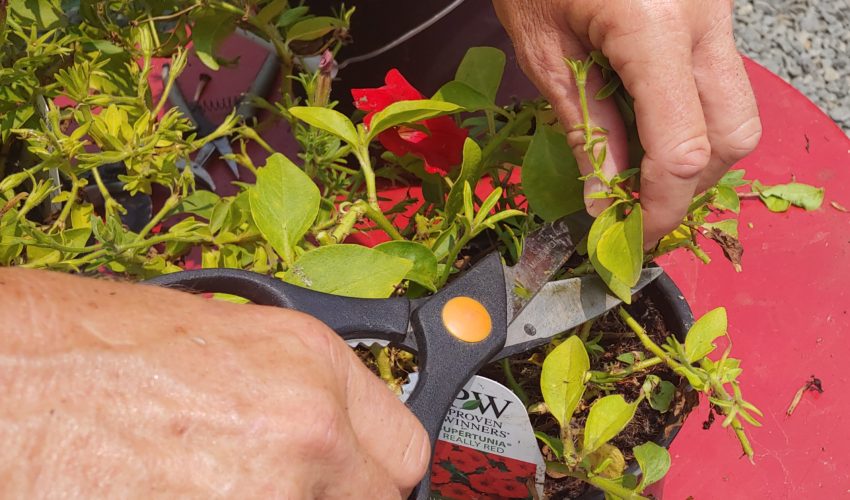
Cutting Back Annuals and Perennials
In April or May, we plant beautiful annuals and perennials. At this time, they are thriving, full of buds and flowers and fill in your landscape beds perfectly. Fast forward 60 days or so, and your petunias are now leggy. They have turned yellow and have seemed to stretch out. The flowers have decreased, and you are left with an unattractive flower bed. What’s a gardener to do? Continuing reading to learn how and why you should be cutting back perennials and annuals!
Necessary Tools
When cutting back annuals and perennials, you will need specific tools. Hand pruners or scissors will work perfectly for this task. Make sure these tools are sharp. Please use extreme caution when sharping the blades. For the tough to get to places, where precision is necessary, use micro-pruners, or as Jane likes to call them, “Snippy Snips!”
Cutting Back Annuals
Cutting back annuals is not rocket science, but does take some knowledge. If you can round up all the stems of the plant, do so. Doing this will allow you to work more efficiently and will allow you to see the main stem of the plant. When you have all of the plant grouped in your hand, begin making the cutting about four to five inches above the soil line. When you are complete, be sure to fertilize the newly pruned plant. The excess nutrients and new cuts will promote new growth and more flowers!
Cutting Back Perennials
When cutting back perennials, one can follow the instructions for annuals above if the plant grows similarly. If the plant is more of a woody shrub, much like a buddleia, we do not recommend cutting it back as we do with annuals. For plants such as these, we recommend using the micro-pruners, or “snippy snips” to get in between the branches to make a more precise cut. When trimming these plants, cut just below the dead bloom. This will promote new growth and buds!
For more updates, please visit our Facebook page!
